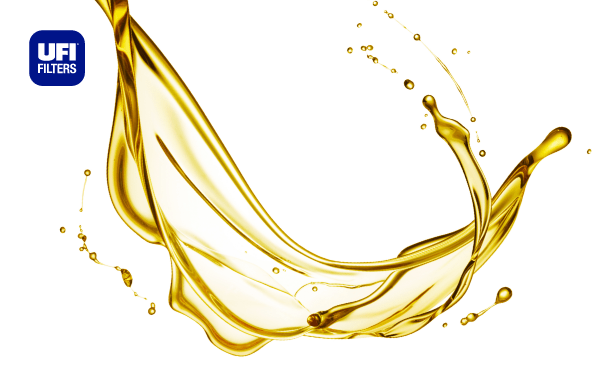
In February’s post we talked about the importance of proper filtration of hydraulic fluids to extend the life of oil and system components.
This month we will take an in-depth look at the types of fluids used in hydraulic applications, as the type of oil used and its characteristics affect the selection and the sizing of the filter, as well as the materials to be used, which must be compatible with the chemical formulation of the fluid.
What is hydraulic fluid?
Every hydraulic system is characterised by a fluid that circulates between various components (pumps, valves and actuators) transmitting power within the system.
In addition to its primary function of transporting mechanical energy, the fluid also has additional functions:
- lubricates contacting and moving surfaces,
- protects components from mechanical corrosion
- transfers heat and cools the system
- cleans the system by transferring contaminants and wear particles to filters
Hydraulic fluids find use in a variety of both mobile and stationary applications, including excavators, elevators, hydrostatic transmissions, tractors, and several industrial sectors.
The fluids used in hydraulics are:
- Water, which has very limited use because it promotes corrosion and has no lubricating power; it is used only when there is a risk of flammability or pollution to the environment
- Mineral oils
- Water-oil emulsions
- Synthetic fluids
- Environmentally friendly fluids
Generally, in most hydraulic applications today, mineral oils are used or, for those sectors that require non-flammable hydraulic fluids, water-oil emulsions, to which we had already dedicated an in-depth discussion in recent months (see post).
Classification of hydraulic oils
The International Organization for Standardization (ISO) has established with ISO 6743-4 the detailed classification of family H (hydraulic systems) fluids belonging to class L (lubricants, hydraulic fluids and similar products).
The ISO 6743-4 classification system can be applied generally to the three main classes of hydraulic fluids:
- Mineral hydraulic fluids (i.e., petroleum-based)
- Fire-resistant hydraulic fluids
- Biodegradable hydraulic fluids
Mineral hydraulic fluids
As anticipated in the previous paragraphs, the largest class of hydraulic fluids are oils based on refined hydrocarbons, i.e., petroleum.
Petroleum is a very functional base for industrial fluids: once refined (HH) it is formulated with various additives to prevent rust, oxidation, foaming and wear.
Below is a list of the most common classifications of mineral hydraulic oils and their respective descriptions:
- ISO – L – HH – basic mineral oils, without corrosion inhibitors
- ISO – L – HL – refined mineral oils with antioxidant and anti-rust properties
- ISO – L – HM – oils with additives to increase wear resistance
- ISO – L – HR – oils with a high viscosity index
- ISO – L – HV – high viscosity index construction and marine oils
- ISO – L – HG – obtained from HMs by the addition of additives to reduce the stick-slip effect
The oils most commonly used are HMs.
Fire-resistant hydraulic fluids
There are several types of flame-resistant fluids and they are generally classified as follows:
- ISO – L – HFAE – Emulsion, oil-in-water (usually >80% water content)
- ISO – L – HFAS – chemical-in-water combinations (usually >80% water content)
- ISO – L – HFB – water-in-oil emulsion (usually >40% water content)
- ISO – L – HFC – glycol or water-glycol solutions (usually >35% water content)
- ISO – L – HFDR – synthetic fluids that don’t contain water, composed of phosphate esters
- ISO – L – HFDS – chlorinated hydrocarbons (without water)
- ISO – L – HFDT – HFDR/HFDS blends
- ISO – L – HFDU – Synthetic fluids containing no water and of other composition
Biodegradable hydraulic fluids
Finally, there are fluids developed in recent years for applications where environmental compatibility is required, which are divided into:
- ISO – L – HETG (Triglycerides – vegetable oils)
- ISO – L – HEPG (polyglycols)
- ISO – L – HEES (synthetic esters)
- ISO – L – HEPR (Polyalphaolefin and related hydrocarbons)
The importance of selecting components that are compatible with the hydraulic fluid
Hydraulic systems are at the heart of many industries and numerous machines, both mobile and stationary, which often operate under extreme environmental and operational conditions, so the hydraulic fluid is essential to ensure proper functionality of the system over time, just as it is essential to select the right filtration system for the characteristics of the oil used, so as to ensure perfect material compatibility.
In fact, the correct material makes it possible to prevent possible corrosion phenomena and prolong the longevity of the system components. UFI Filters Hydraulics, thanks to its 30 years of experience in the filtration sector and its wide range of filtration products designed for the various types of oil, is able to select the most suitable filtration solutions for the specific type of fluid used.
An initial indication of compatibility is also always specified on the first page of each catalogue series, so that customers can independently evaluate compatibility with the oil in use.
In case of doubts or further clarification, our Team is available to assess specific and customized needs and requests. Please do not hesitate to contact us!